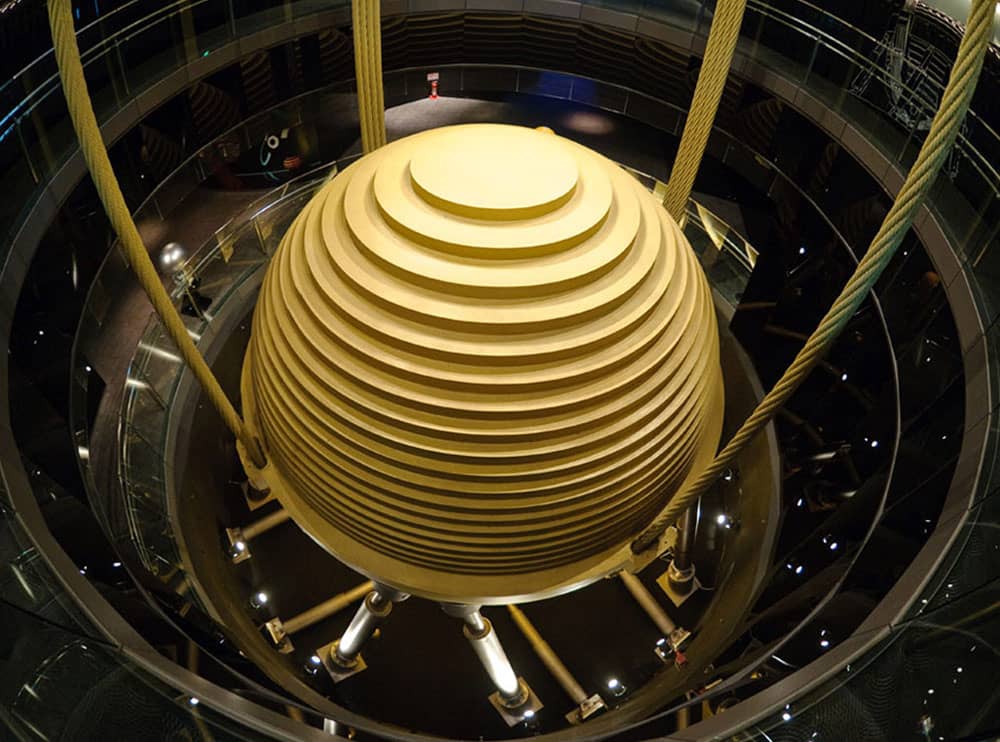A Tuned Mass Damper (TMD), or a Vibration Damper, is an anti-seismic device. It is a technology put together in order to help protect a building from an earthquake.
When a seismic wave hits a building, especially a tall building, it starts to sway side-to-side. This causes massive lateral load on the structure and eventually it cracks. You can always look for a better, stronger material to build the structure with, of course. But wouldn't it be better if the building doesn't have to experience that kind of strain at all?

The TMD is such a device to facilitate just that. In principle, the waves hitting the building lose most of their force in moving this assembly, instead of acting on the building. So, the building sways much less.
Any TMD is built out of three main components as follows:
How big the mass should be, and how strong the spring must be, depends upon the oscillation frequency of the building at that height.
When a building experiences sway, this is expressed in an oscillating motion. It creates alternative acceleration. The springs that hold the mass of TMD relay this acceleration force to the heavy mass - but in a delay.
So, when the building is oscillating in one direction, the mass is going in the other direction. And when the opposite force is applied, the mass is still on the other side. That means most of the force is used to move the mass.
Which means, doing it in harmonic oscillation, the building stands relatively still during a seismic activity that would have swayed the building from side to side.
However, for this to work properly, the oscillation frequency of the TMD and that of the building at that level should match perfectly. Otherwise the two sinusoidal waves won't be exactly opposite of each other. Instead, they would create a somewhat different wave.
The ratio of the mass of the TMD and the building significantly affect the wave cancellation process. As mentioned above, the effectiveness of the TMD would also depend upon the ratio of the oscillation frequencies of the building and the TMD. Ideally, this should be 1 or as close as possible.
We need to remember that not only earthquakes can make a building rock. In case of tall, slender structures, or wide, long ones, small things can cause vibrations that oscillate the structure. For example, winds sway skyscrapers, and walking causes bridges to wobble.
These micro vibrations also contribute to the building's damage. For this reason, special GERB type TMDs are used, which are sensitive to small wave frequencies and can cancel them to propagate through the structure.
Tall, slender buildings often have these. Communication towers, tall skyscrapers, spires and towers can be well-protected from earthquakes using this type of TMD. A horizontal TMD absorbs horizontal and torsional forces very well.
When the structure is longer or wider than its tall, has long spans, then this type of devices are applied to prevent quake effects. They are made to withstand some horizontal vibrations, but are very vulnerable to vertical forces. Using a series of vertical TMD can help.